What Are Display Ads?
Display ads are visual advertisements that appear on websites, social media platforms, and mobile apps. They typically include images, videos, and text.
Such ads appear alongside online content you’ve already engaged with. Here’s what a display ad in a blog post looks like:
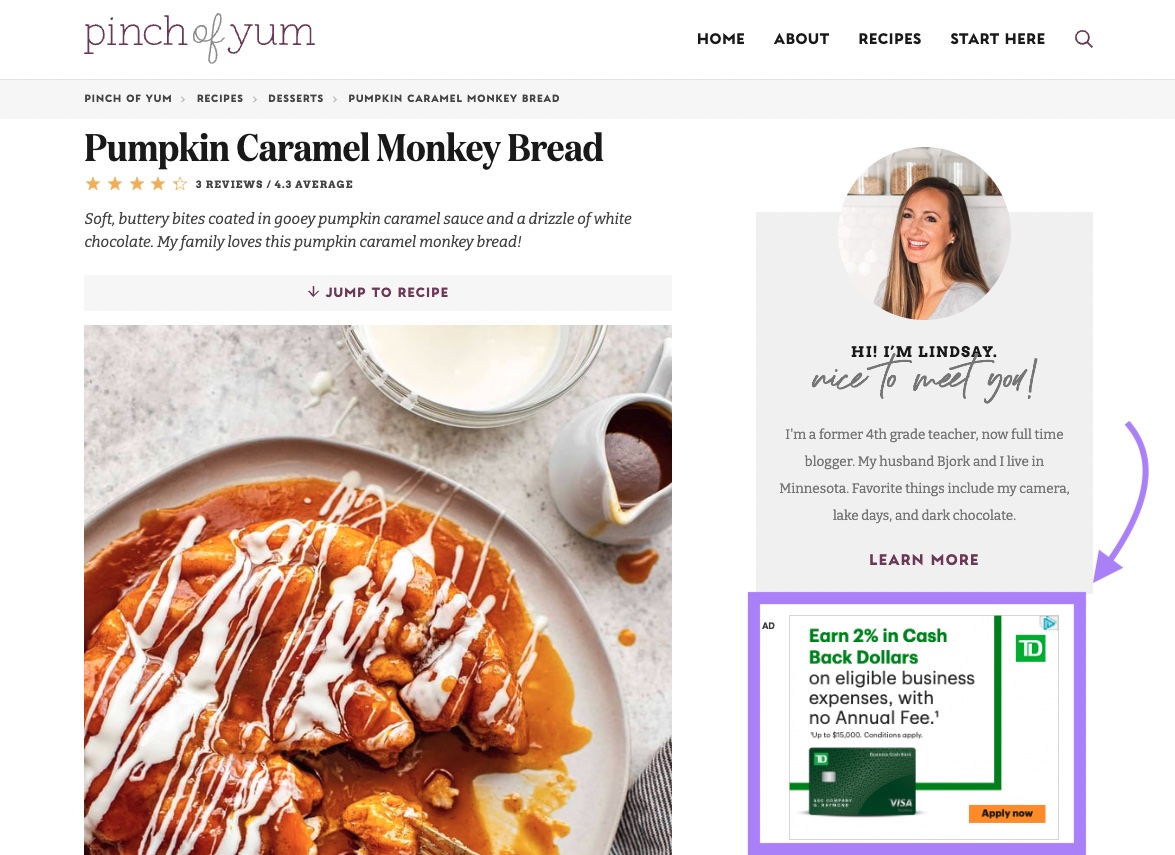
Display ads are often part of pay-per-click (PPC) digital advertising campaigns. Where advertisers pay a fee every time someone clicks their ads.
A PPC campaign can include display ads on websites, social media platforms, or mobile apps as well as search ads.
The best display ads help generate clicks, conversions, and brand awareness when they encourage the target audience to act. Desired actions may include clicking an ad and visiting a landing page, completing a form, or making a purchase.
Types of Display Ads
You can break down types of display ads according to their format or their mode of targeting.
Ad targeting modes include:
- Regional or geographic: These target a particular location
- Demographic: Ads based on someone’s interests or preferences
- Contextual: Often specific to a particular website, so they need to be hyper-relevant to the target audience
- Retargeting: These focus on enticing previous website visitors back
When it comes to choosing your ad format, you’ll also need to consider different ad sizes and shapes that best fit each format.
For example, static ads can be small and narrow. But video ads must be rectangular or square and large enough for comfortable viewing.
Popular ad formats include the following:
Static Ads
Static ads use a mix of copy, images, and hyperlinks to encourage users to visit a website’s homepage, product page, or other landing page.
Typically saved as JPEG or PNG files, static ads are easy to create and fast-loading.
You’ll often find them at the top of the search results. Like this text-based Semrush ad on the Google search page:

Ads with images come in various shapes and sizes, such as rectangular banner ads.
Banner ads are most likely to be horizontal and appear at the top or bottom of a website. You’ll mostly see them beside or just below the website’s logo.
Here’s a Semrush banner ad example:

Square static ads work well on Facebook or Instagram because they blend in with these platforms’ organic posts, making them feel more authentic. Like this one from The Oodie:
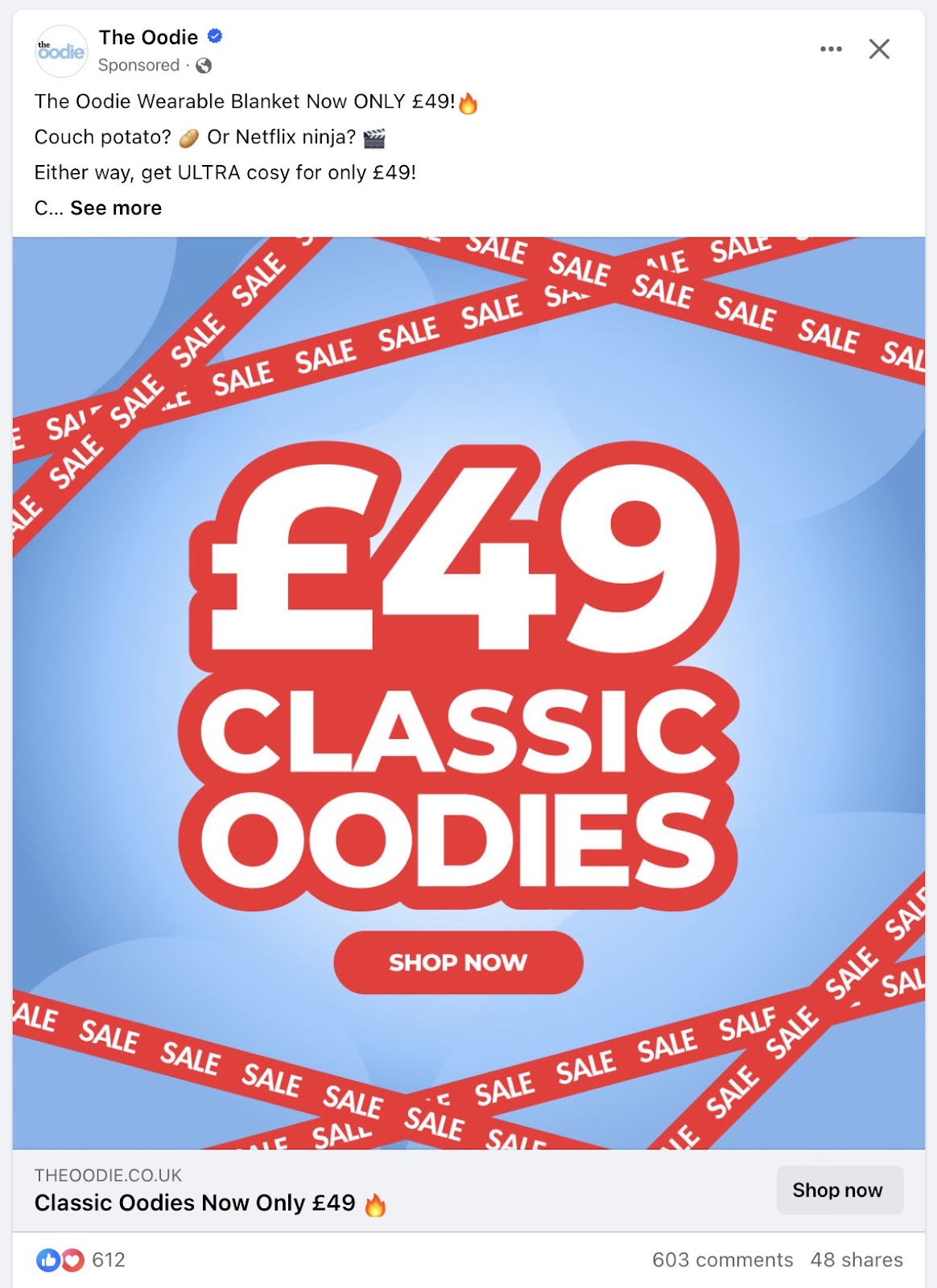
Vertical and skyscraper static ads are becoming increasingly popular. Particularly for use in between Instagram and Facebook Stories or Reels, and between TikTok videos.
Interactive Ads
Interactive ads can be static or moving ads containing clickable (or tapable) elements—like forms or buttons. Usually built with HTML5 code, the dynamic elements encourage user engagement.
Interactive ads include interstitial ads and rich media ads.
Interstitials are full-screen ads that cover the interface of the host application and appear during transitions. Between game levels, for instance.
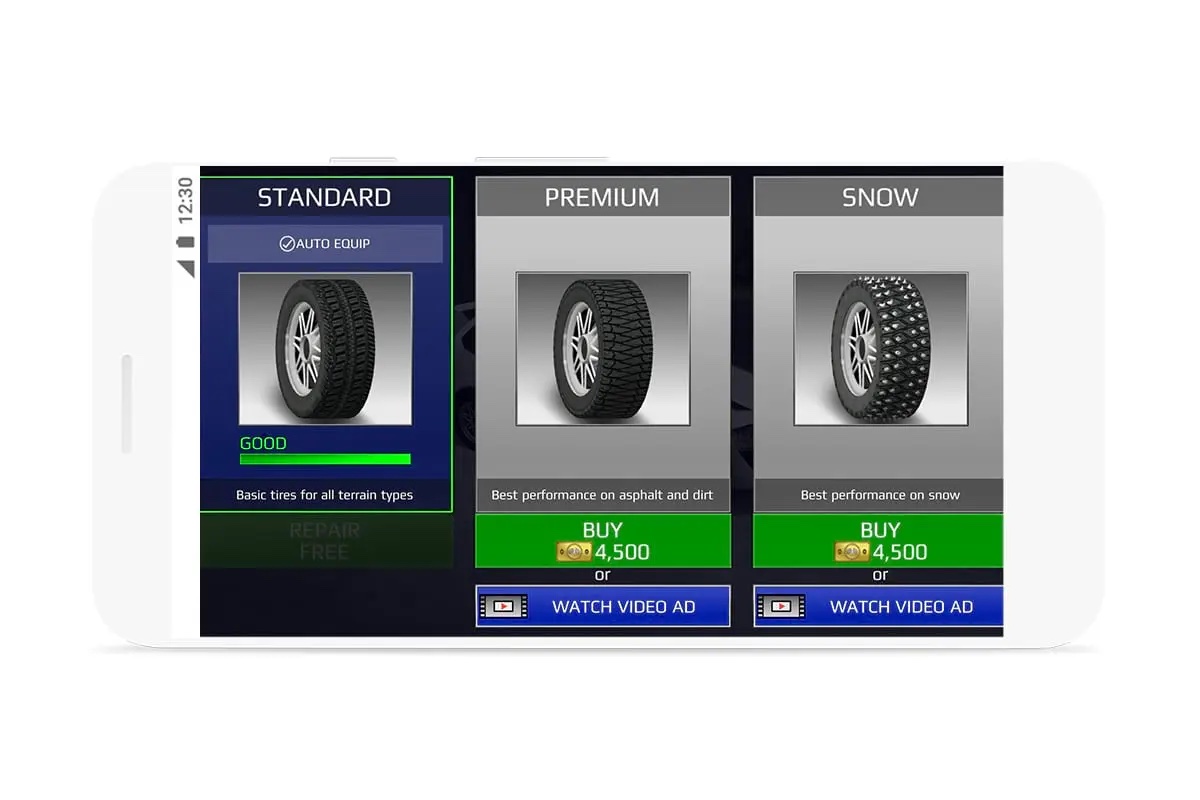
Because they cover the whole screen, users must interact with these ads (even if just to close them) to return to the page they were on.
Rich media ads are interactive ads that change their appearance when you interact with them.
In the below example, the text changes if you drag the arrows left or right.
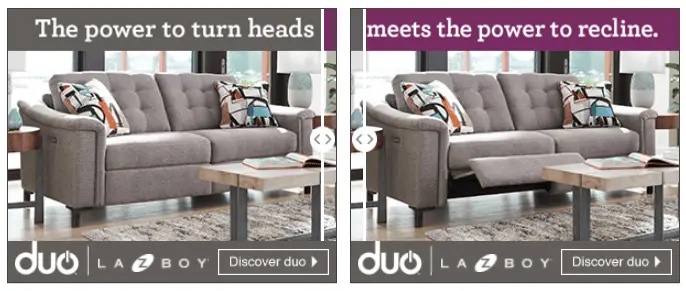
Allowing users to affect ad content like this can keep them engaged for longer, even if just for a few extra seconds. Helping to cement your brand in their mind.
Animated Ads
Animated ads are like short, looping videos but without sound. They use movement to catch viewers’ eyes.
Created as GIFs or HTML5 files, these simple moving ads can display multiple frames—allowing for more detailed storytelling or messaging.
Animated ads are dynamic and often generate more visual interest than static ones. They can be effective in conveying simple stories or showcasing multiple products or features in a single ad.
Places you might see animated ads online include news sites, social media pages, and e-commerce stores.
Here’s an example on The Register’s homepage:
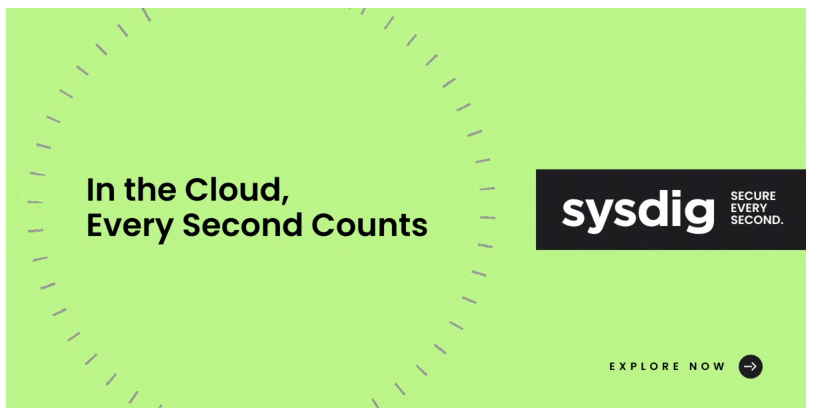
At first glance, it looks like a static display ad until it begins moving. The animation is simple, but will be enough to stop at least some viewers from scrolling straight past.
Video Ads
Video ads also use movement to capture internet users’ attention—but aim to hold it longer by presenting more detailed narratives.
These moving ads use visuals and sound to engage their audiences. Often involving real people or products.
You can add them to your web pages, social media feeds, or apps.
Here’s an example of a Bank of Singapore video ad playing in a banner at the top of Forbes’ website.

Appearing in Forbes’ ‘Money’ section, it targets users likely to be interested in the Bank of Singapore’s wealth management products.
Video display ads typically cost more than other formats to produce and distribute, but research suggests a higher demand for them among internet users.
In a Wyzowl survey, 91% of online consumers said they wanted to see more videos from brands. 89% said watching a video had convinced them to buy a product in the past.
In other words, a slightly more costly video ad could be justifiable for a new or flagship product. Start with a single ad placement and monitor engagement to see if further investment is worthwhile.
Further reading: Display Ads: What They Are, Types, & How They Work
How Does Display Advertising Work?
Display ads use algorithms and data to reach specific audiences across online platforms.
Think of it as a matchmaking service for ads and people.
When you visit a website or use an app, the platform’s algorithm assesses your behavior, interests, and other factors to decide which ad to show you.
The ads are usually hosted on ad networks like Google Display Network (GDN).
The network serves ads to appropriate websites, based on the targeting criteria advertisers set. Like geographic location, age, and gender.
Online shopping behavior is another criterion—which is where retargeting and remarketing ads come in. These target users who have already visited a website but didn’t take a specific action.
The entire process of display advertising makes the ads you see more relevant to you. Plus, advertisers get the most bang for their buck.
Further reading: What Is Google Ads & How Does It Work? A Comprehensive Guide
16 Display Ad Examples to Inspire You
To give you some ideas for your next online advertising campaign, let’s take a look at some of the latest and best display advertising examples from around the web.
Why should you learn from these?
Effective display ads can be a great way to capture your audience’s attention. But you need to be at the top of your game if you want to drive action.
The best display ads examples below can help you discover tactics to make your ads stand out.
1. Semrush
This Semrush display ad does two things to help us build trust with our audience.
First, it provides social proof. When an ad connects social proof and specific numbers, the result is an automatically more trustworthy and attention-grabbing message.
We capture this idea with the question, “Want to grow revenue 1,800%?”
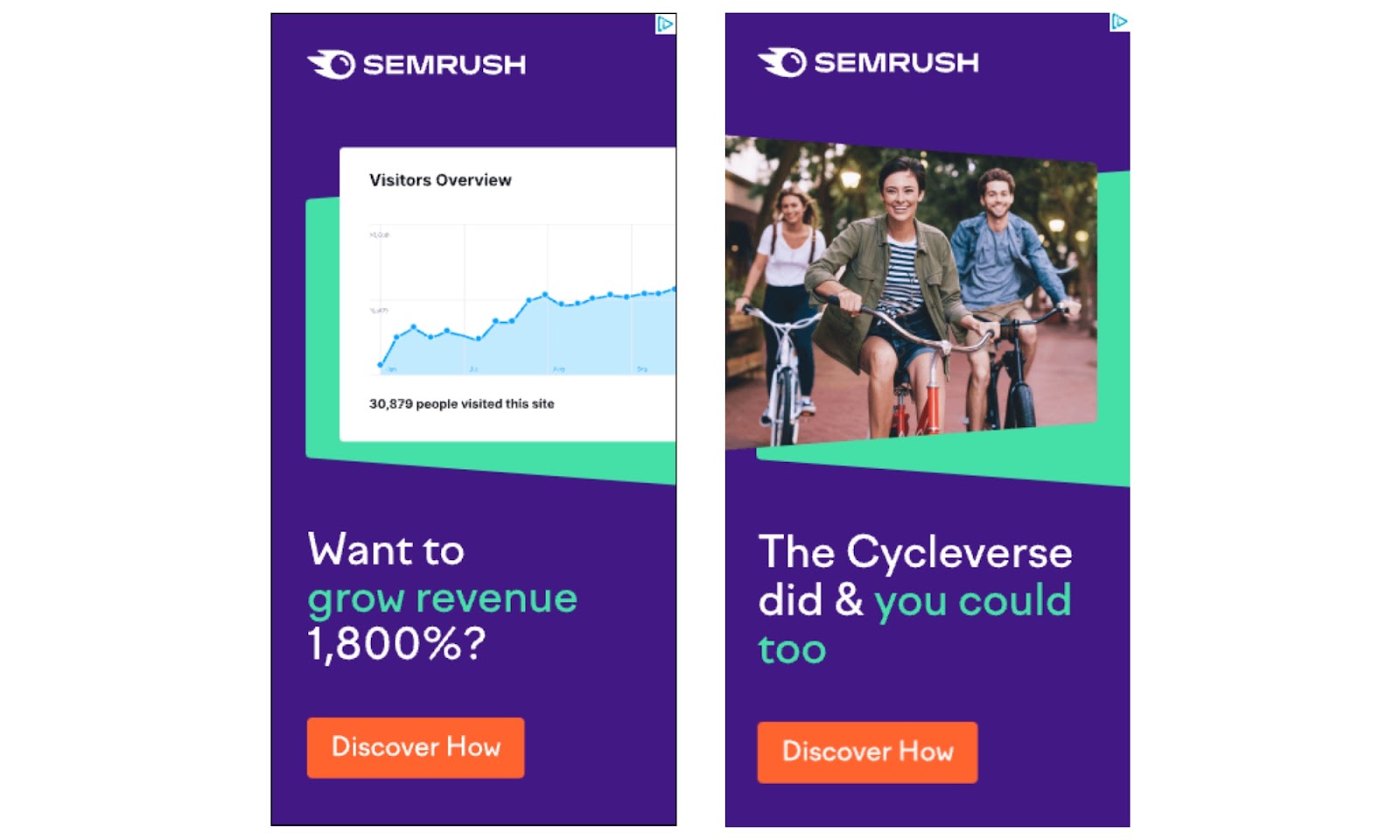
That question immediately piques interest. The ad then switches to “The Cycleverse did & you could too.”
Social proof taps into a psychological need to follow successful patterns set by others.
How does this happen?
Humans inherently seek validation and reassurance from peers. Seeing others benefit or succeed from an action acts as a testimonial. Convincing you that if other people can achieve something, so can you.
In our example, a number as high as 1,800% grabs attention and adds a layer of credibility.
Second, Semrush presents a uniform brand image. Here, we stick to our brand colors throughout the ad.
If you’re even slightly familiar with Semrush, the consistent color scheme makes the ad instantly recognizable. The palette further reinforces brand identity and trust.
2. LinkedIn
LinkedIn uses pain point marketing in the display ad below to resonate directly with its audience’s challenges or problems. Which makes the solution offered more relevant and urgent.
Identifying and addressing pain points helps your ad to build a more emotional and immediate connection. It creates empathy, which people love about brands.
Empathy and connection can in turn increase conversion rates.
LinkedIn’s display ad targets a common headache for employers: the cost and difficulty of hiring the right talent. And it offers a solution that hits right where it hurts.

The ad text “Find the people you want to interview, faster” is simple but powerful.
Consider the scenario. The average cost of a bad hire can be anywhere between $17,000 and a staggering $240,000. That’s not just pocket change—it’s potentially a massive dent in a company’s budget.
Finding the right talent is tough because of fierce competition and skills shortages. Plus the sheer amount of time and resources it takes to sift through resumes and conduct interviews.
LinkedIn knows this all too well. The ad taps into these frustrations.
By offering a solution to find interview-worthy candidates, the platform makes a compelling case for why employers and recruiters should use it for their next hire.
3. PayPal
PayPal’s ad targets business owners with a persuasive promise of increasing repeat buyers.
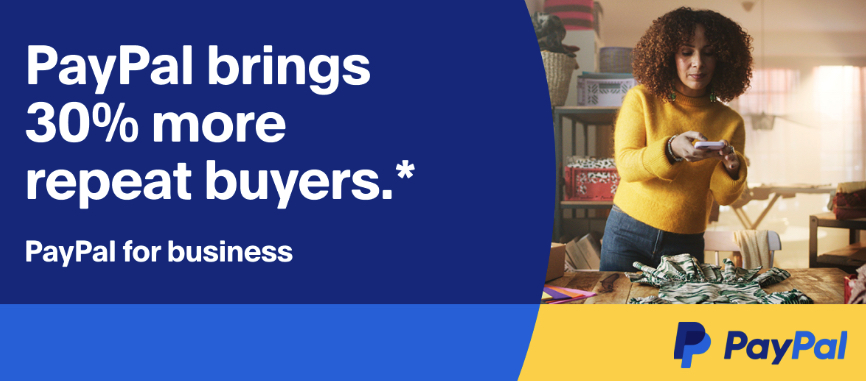
Here’s why the message is so powerful. Our research shows that:
- The probability of selling to an existing customer is a whopping 60% to 70%, compared to just 5-20% for a new customer
- Existing customers are 50% more likely to try your new products
The display ad boldly declares, “PayPal brings 30% more repeat buyers.” Immediately catching the attention of anyone looking to grow their customer base the same way.
As a bonus, loyal customers are not just likely to make a purchase but also often become advocates for your brand. Free word-of-mouth advertising can be more credible and impactful than any paid marketing campaign.
4. Adobe
Adobe’s banner ad for Photoshop links product features, ease of use, and a subtle social message to appeal on multiple levels.

The software company gets straight to the point with the tagline. It succinctly underscores its product’s user-friendliness while highlighting a standout feature: the blending tool.
The woman’s image seamlessly merging with the background shows the tool’s effectiveness. It also captures attention and fires the imagination.
“Everyone can blend in” has a twofold meaning. It showcases the tool while suggesting that the software is accessible to people of all skill levels and backgrounds.
The repetition of “Everyone can” subtly taps into a broader social message about inclusivity and individuality.
It’s this multi-layered approach that makes the Photoshop ad intriguing and memorable. Effectively promoting the product by resonating with a wide target audience.
5. Mailchimp
The Mailchimp ad below captures the imagination and interest of forward-thinking business owners.
How?
By spotlighting hot-topic technology like AI backed up by impressive revenue numbers.
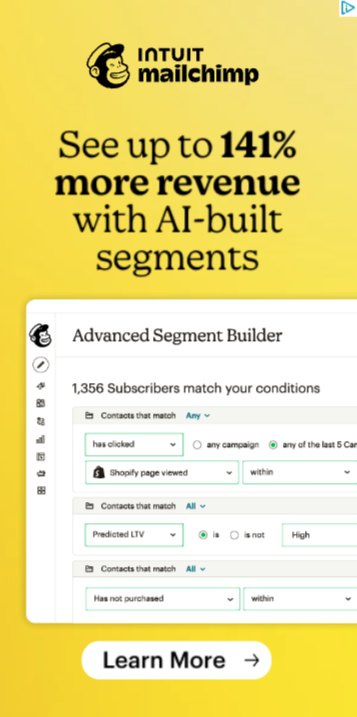
AI garnered a lot of attention in 2023, especially from business owners. A Forbes survey shows that 64% believe in AI’s potential to improve customer relationships.
Mailchimp taps into this tech trend to make its platform immediately relevant to those wanting to keep up.
The ad copy goes beyond the tech appeal of AI-built segments. It places a clear, quantifiable benefit front and center.
Numbers resonate with business owners. And the promise of a potential revenue boost of 141% is hard to ignore.
The ad also includes a visual glimpse of Mailchimp’s Advanced Segment Builder. Tangibly showing how easy the interface is to read and navigate.
Mailchimp’s display ad paints a clear picture of modernity, efficiency, and lucrative results. Spelling success for potential users.
6. Spotify
Spotify’s ad employs the psychological tactic of urgency combined with the power of FOMO (fear of missing out) to direct people toward its premium plan.
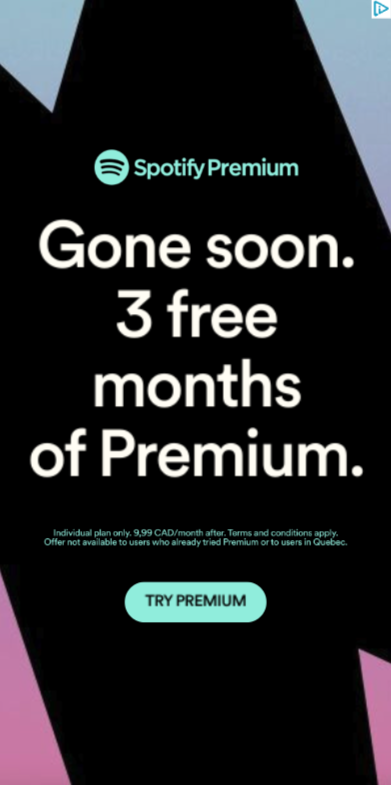
The two elements combine well to trigger a psychological response that can result in immediate action.
The ad headline, “Gone soon. 3 months of free premium,” accomplishes two things at once:
- It presents a tempting offer—three free months of premium service
- “Gone soon” encourages users to subscribe now or miss out
This technique is powerful for driving short-term actions like quick signups or flash sales.
Spotify’s emphasis on the temporary nature of its valuable offer gives fence-sitters a valid reason to jump in and hit that subscribe button. It’s a winning approach intended to turn hesitation into decisive customer action.
7. Sephora
Sephora’s display ad focuses on flexibility through delivery and pick-up options.
Four different ways to get products—pick up curbside, pick up in-store, same-day delivery, and free shipping—give customers control over their shopping experience.
The options offered help the beauty brand meet various preferences to capture a diverse customer base.

The tagline “Options that work for you” is more than just catchy. It’s empowering.
These ad tactics align well with consumer preferences. Research shows that customers will pay a premium of up to $9 per package for same-day or next-day delivery, as well as for specific day and time slots.
Sephora makes a smart move: turning the convenience of choice into a competitive advantage.
8. Google
Google’s ad for its Workspace suite sends a straightforward but promising message of efficiency and business growth.

Google achieves its goals with a clean design and a punchy tagline.
The ad features easily recognizable logos for Google Workspace tools. Google Drive, Gmail, and Google Meet require no explanation—nearly everyone is familiar with them.
The tagline “Go from booked appointment to fully booked” strikes at the heart of what businesses want. It promises a transformational journey they can relate to.
The call-to-action (CTA) “Get Started” mirrors the clean, straightforward ad design. No fluff—just a clear path to get you from where you are to where you want to be.
Here, Google captures the company’s ethos of simplicity and utility. Making the ad a standout example of how less can be more.
9. Airbnb
Airbnb’s display ad capitalizes on the growing trend of staycations and weekend trips.
It appeals to a wide demographic in search of quick holiday escapes. In Canada alone, domestic overnight trips in 2022 more than doubled to 13.6 million from the previous year.
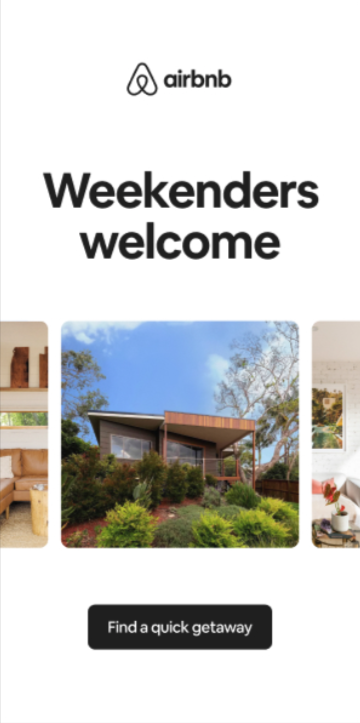
The ad tagline “Weekenders Welcome” resonates with the modern traveler.
The enticing imagery of a property invites viewers to imagine themselves in such a space. Turning the idea of a spontaneous short break into a real possibility.
The CTA “Find a quick getaway” echoes the tagline’s sentiment. And provides a straightforward next step for interested prospects.
10. Asana
Asana’s ad wastes no time in showcasing the measurable benefits of its project management tool.
Solid statistics promise success. The tagline lays it out clearly: “42% faster execution, 34% more efficient, 100% Asana.”

Leading with impactful numbers immediately draws attention and builds credibility.
The CTA “Sign-up today” is straightforward and aligns perfectly with the ad’s no-nonsense approach.
This type of display advertising links the art of persuasive messaging and the science of numerical proof. It targets decision-makers who understand that greater efficiency and quicker execution contribute directly to a healthier bottom line.
11. TD Bank
TD’s ad makes an attractive monetary offer to break through consumer inertia. Urging prospects who are hesitant to change their long-standing banking habits to reconsider.
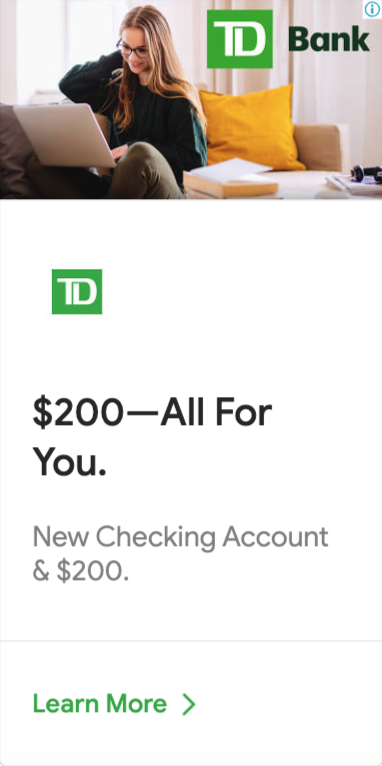
The tagline “New Checking Account & $200” is already eye-catching. But TD adds an extra layer of assurance with “All for you,” emphasizing that the $200 comes without any catches or deductibles.
This is a strategic move. Especially considering that U.S. adults tend to stick with their primary checking account for more than 17 years.
A tangible, immediate benefit helps TD target a pain point for potential customers—the commitment to an old account. Even if that long-term loyalty is more out of habit than satisfaction.
The ad strongly incentivizes consumers to take the leap, switch their checking account, and claim $200 just for doing so.
12. Atlassian
Atlassian’s display ad below immediately establishes authority and credibility for the software business.
How?
By highlighting its recognition in the 2023 Gartner® Magic Quadrant™ for DevOps Platforms—a well-recognized metric of excellence in the DevOps space.

Using the time-tested strategy of third-party validation, the ad copy is an endorsement of the company’s expertise and industry leadership.
The CTA “Get report” is both a nudge and an invitation to download the 2023 Gartner report. Pointing potential customers in the right direction for proof of Atlassian’s leadership claim.
The accolade positions Atlassian as an authority and provides viewers with an actionable next step to become more informed. A combination that makes the ad both engaging and useful.
13. The New York Times
This New York Times ad takes a straightforward and transparent approach to entice new subscribers.
It highlights a deeply discounted rate and a flexible subscription model as key selling points.

Zeroing in on what matters most to potential subscribers: cost and flexibility.
The offer, “Now only $1 a week for your first year,” is tempting. But the ad takes it a step further with strikethrough pricing crossing out the original cost of $6.25. The comparison reinforces the value of this special rate.
The phrase “Cancel or pause anytime” addresses a common pain point: the fear of commitment to a new subscription. An easy exit strategy removes a significant barrier to entry.
The “SUBSCRIBE NOW” CTA button is as direct as possible. It aligns perfectly with the straightforward nature of the ad.
Full focus on the offer in a clean, uncluttered layout makes it hard for potential newspaper subscribers to overlook the deal.
14. Webflow
Webflow’s ad blends intrigue, social proof, and a low-risk proposition to attract companies looking for better content management.

Starting with “The CMS you’ve been looking for,” the copy immediately piques curiosity.
The fact that “leading companies” are making the switch helps the SaaS company build social proof subtly. Credibility motivates potential customers to find out what they might be missing out on.
The CTA button “Try it free” is a major selling point.
A free trial is a no-brainer for anyone who’s dissatisfied with their current CMS. It removes financial risk from the decision-making process. And simplifies the process for organizations.
15. Canva
Canva’s ad underscores the immense value it offers with its expansive library of design elements.
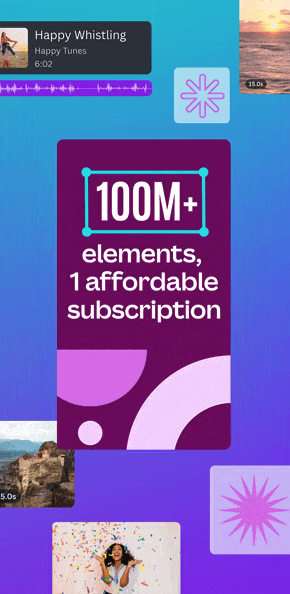
“100M+ elements, 1 affordable subscription” is the kind of straightforward value proposition that gets attention. Hinting at almost limitless possibilities for creativity under a single, budget-friendly subscription.
The colorful graphic also serves a dual purpose. First, it makes the ad stand out on a busy webpage. Then, it acts as a mini portfolio showcasing vibrant, eye-catching designs users can create with Canva.
The ad is a perfect example of how to communicate a complex service—millions of design elements—in a simple way that also conveys the brand’s creative energy.
16. Samsung
Samsung’s rich ad for The Serif TV is a mix of attractive visuals, social proof, and dynamic movement that spotlights the product’s features.
The ad plays like a video and switches between these three graphics.
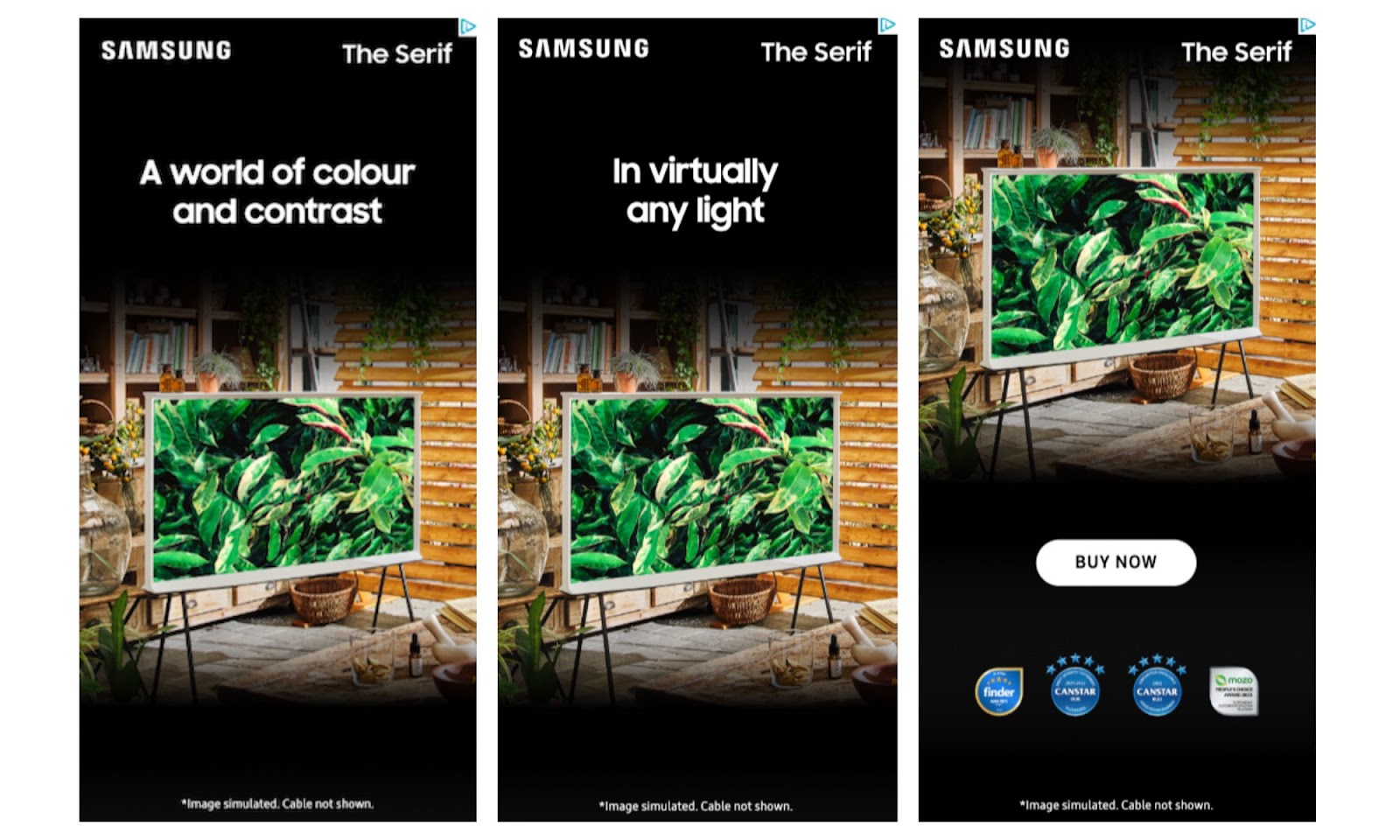
The ad copy, “A world of color and contrast, In virtually any light,” makes an irresistible promise. It paints a picture of an unparalleled viewing experience. And positions The Serif TV as a top choice for quality seekers.
The primary focus is on the TV and its dynamic display. Ensuring the product stands front and center.
Create Your Own Display Ad Campaigns
You can tap into these great display ad examples to draw inspiration for crafting your digital advertising strategies.
It’s also important to keep a pulse on market trends to see what’s working in your niche. When you know what other players are doing right (and wrong), you can fine-tune your marketing efforts for maximum impact.
AdClarity, Semrush’s Advertising Intelligence app, gives you complete insights into your competitors’ performance. Letting you take a closer look at their display, social, and video advertising campaigns to see how you compare.
Additionally, AdCreative.ai can streamline your ad creation process by using AI to swiftly generate ad creative. This helps you save time while delivering polished visuals that reflect your brand's identity.
Level up your advertising today. And turn insights into actionable results.
